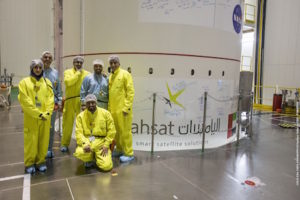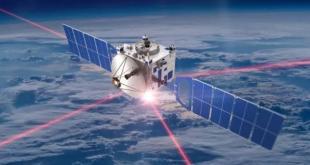
Arianespace have completed the integration of Yahsat’s Al Yah-3 communications satellite to the Ariane 5 space launch vehicle (SLV) that is due to launch it and another satellite on January 25, 2018, from the Kourou launch facility in French Guiana.
The other satellite, SES-14, belonging to satellite communications provider SES, has also been integrated to the Ariane 5 SLV atop of Al Yah-3.
The launch is designated VA241 by Arianespace, and will mark the 241st launch of an Ariane rocket since 1979. The liftoff of Al Yah-3 and SES-14 is set for a 45 minute window starting at 7:20pm French Guiana time on Thursday, January 25.
Once operational at 20 degrees West in geostationary orbit, Al Yah-3 will provide commercial Ka-band coverage to 60% of Africa’s, and over 95% of Brazil’s, populations, through direct-to-home (DTH) television.
“Al Yah-3 represents a leap forward in the knowledge revolution, advancing the UAE’s aerospace ambitions while further bridging the gap in global connectivity,” said a spokesperson for Yahsat.
“The launch of Al Yah-3 continues to develop and build transferable skills among local talent. Yahsat trains and employs Emiratis to manage all types of satellite operations including satellite manufacturing project management (USA), launch processes (French Guiana), control station operations (UAE) and commercial value chain (global),” the spokesperson added.
Al Yah-3 has been built by U.S. satellite manufacturer Orbital ATK.


